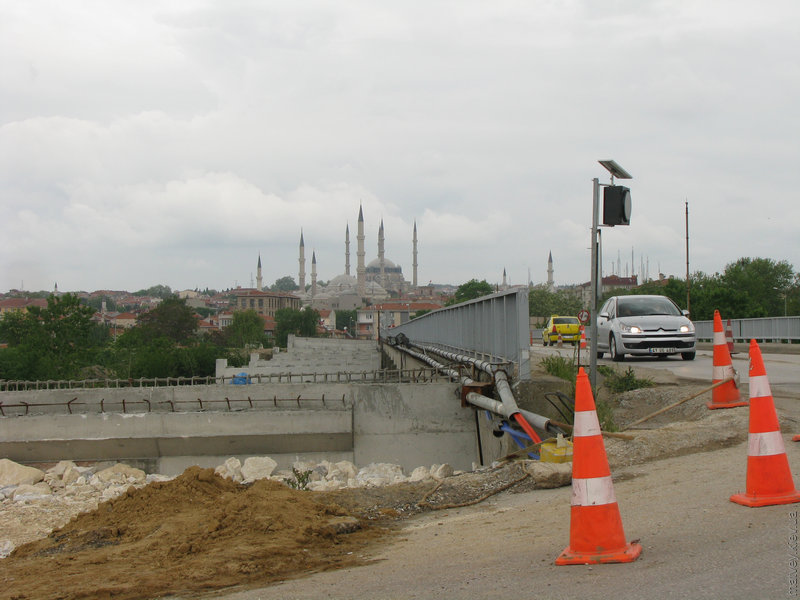We were coming into this town near the borders of Turkey, Greece and Bulgaria from Babaeski — in a car. Edirne edge was looking like this, with a tall building of hotel under construction at that time.
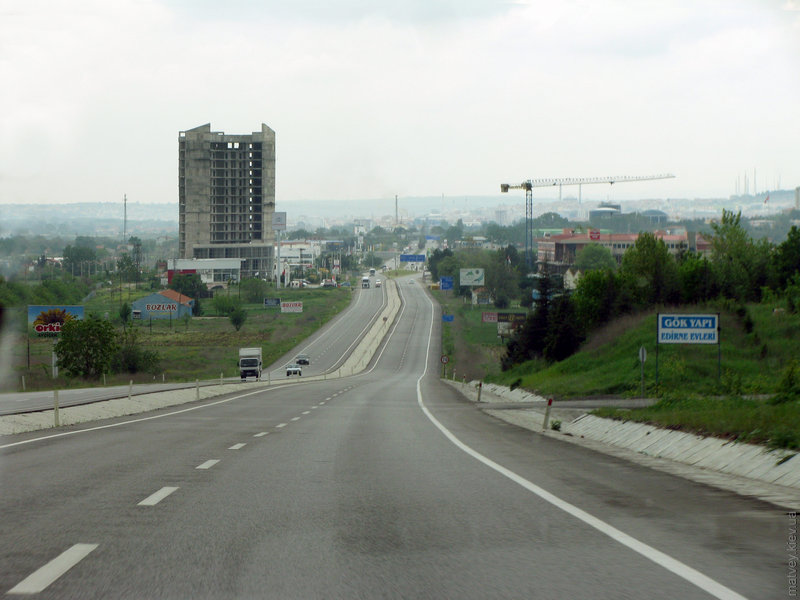
We were coming into this town near the borders of Turkey, Greece and Bulgaria from Babaeski — in a car. Edirne edge was looking like this, with a tall building of hotel under construction at that time.

We were in the town for a few hours — half a day or so. During this short time, we saw the rather famous Selimiye mosque, the much less famous mosque and hospital complex of Bayazid the 2nd, and the town's garage area.
The place before the entrance was full of pigeons waiting for free food. Local entrepreneurs were here, readily selling pigeons' free food to us for an amount not equal to zero.
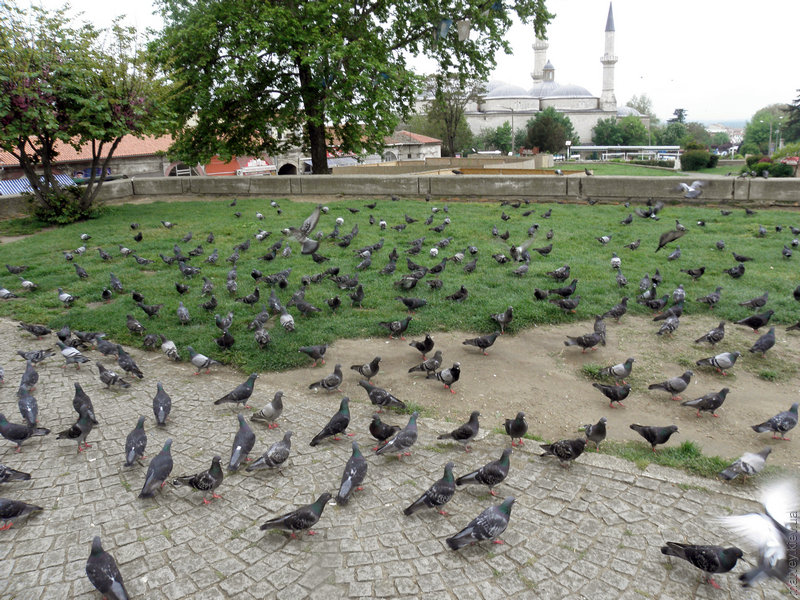
«Entry to the mosque is through the bazaar» is a phrase from a popular book over some post-soviet territories. It turned out to be not a joke — at all. It was unexpected. You are prepared for religious righteousness, you saw women covering their hair before entering. You pass through the door and observe soccer fan t-shirts, sports shoes, logotypes like Lotto hanging over it all.
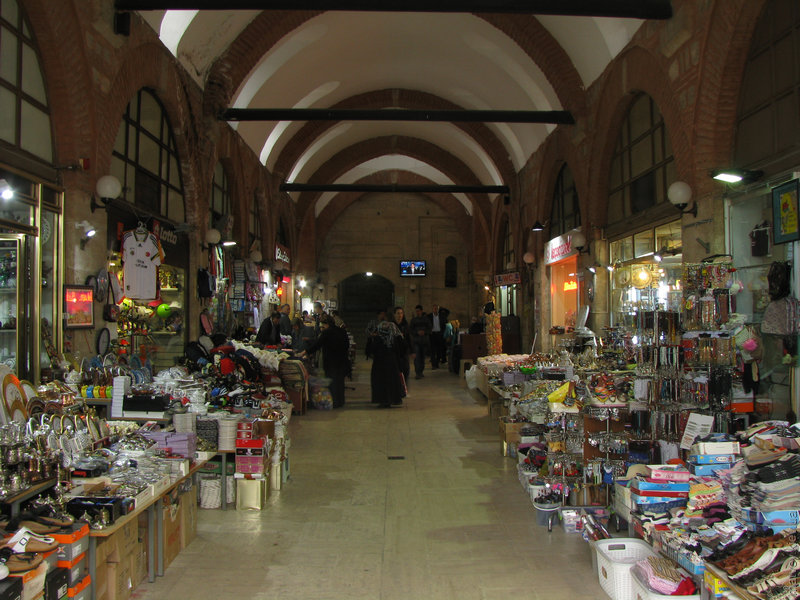
Apart from clothes and household goods, the assortment of the mosque contained usual turkish sweets, sugar-enriched to sky limits. Didn't buy anything, ha ha!
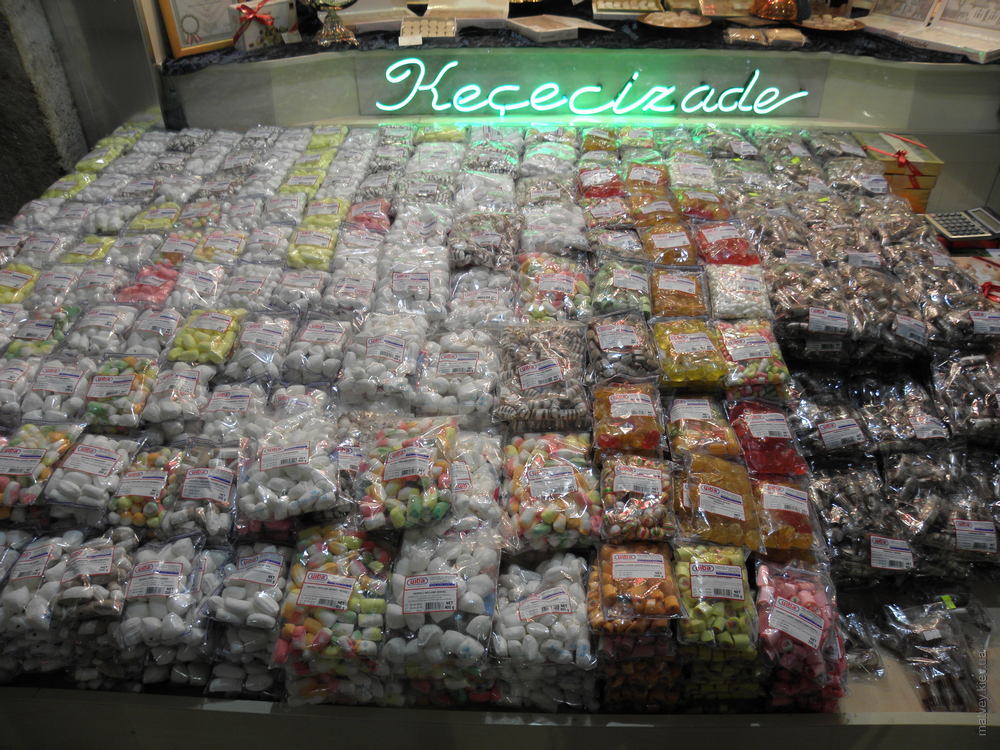
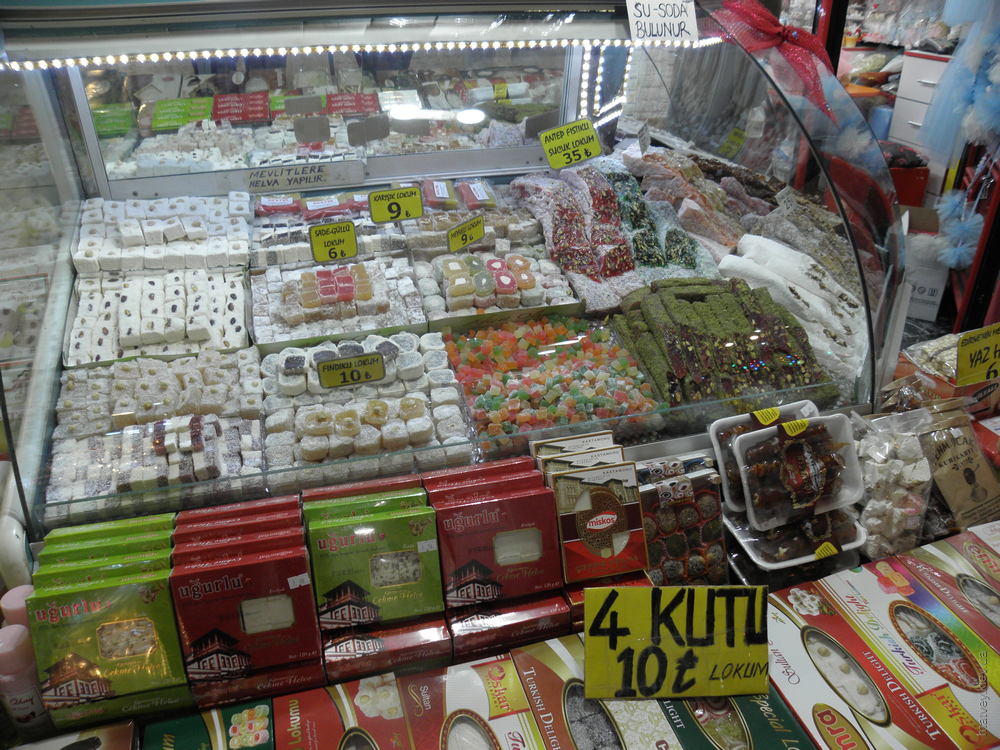
I was not attentive when I was inside. Later, while scrolling through the photos, I noticed that the mosque was a serious feat of architecture. Both inside the hall and outside, in the garden. It is actually a listed world heritage architectural site. The architect was the revered Sinan.
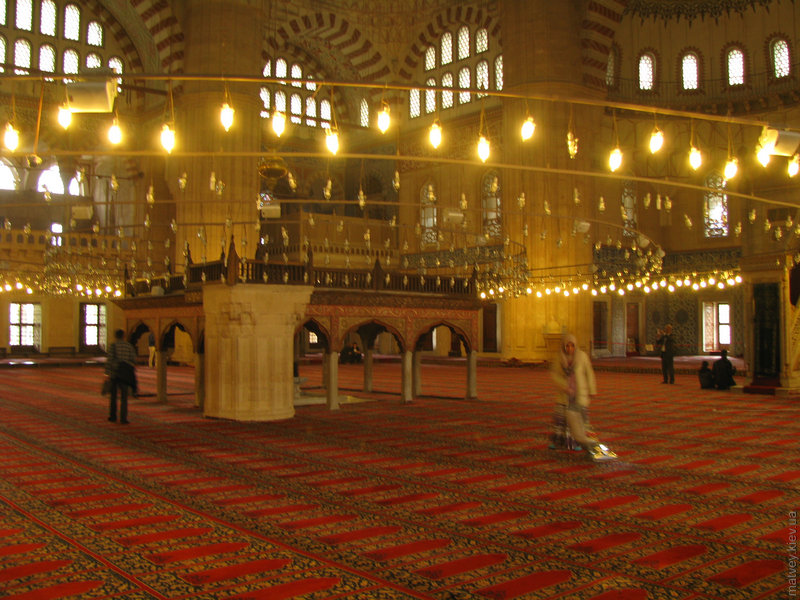

By the way: it is allowed to take photos everywhere in Turkey, whether in a mosque, or in a supermarket, or in a museum. Probably, not including military sites — I didn't check that one.
The domed hall is impressive.
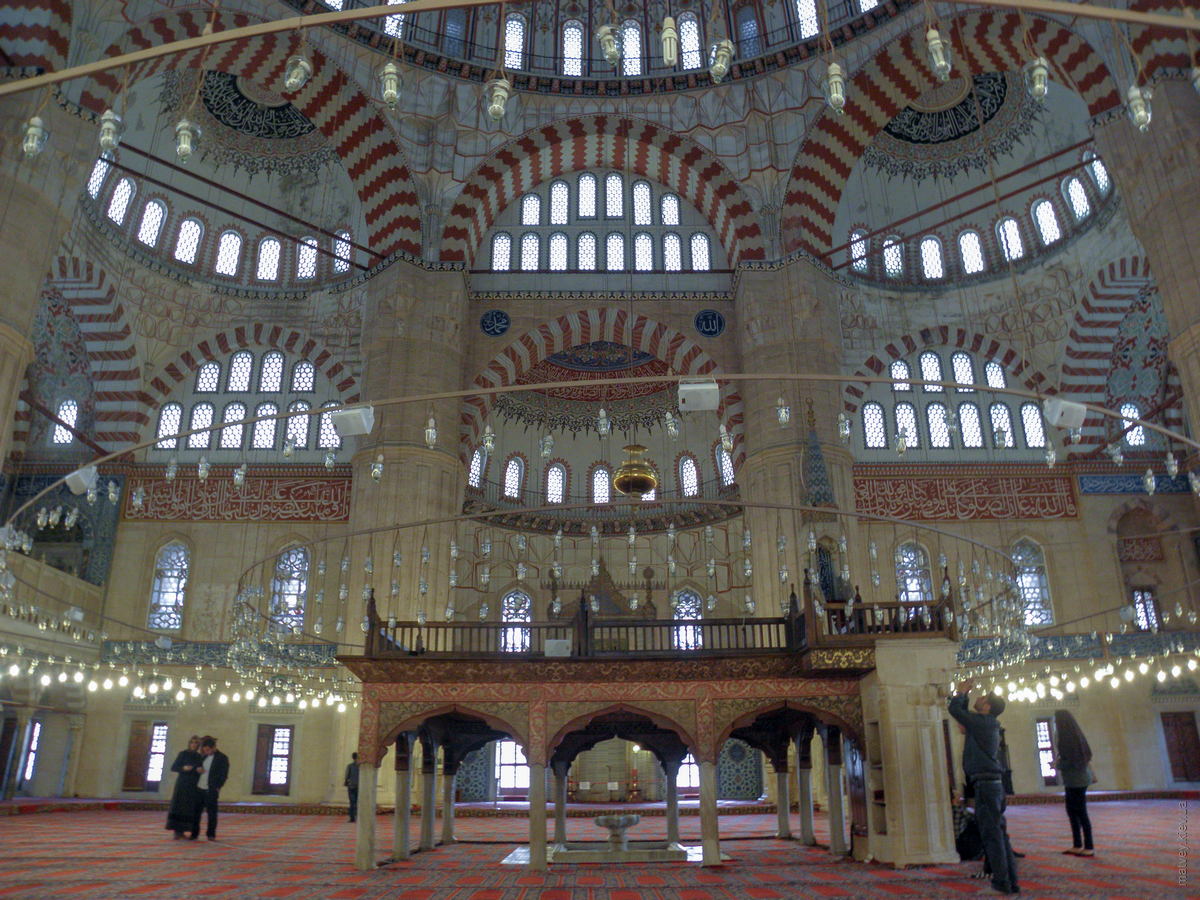
I've been to a school some time ago, and there were several classrooms with ceilings as high as 4 meters. Changing light-bulbs was a task requiring a ladder, a prayer and an experienced adult. Looking at this domed room now, I think that they've solved the light bulb problem by moving them down on a frame. That is good for them, but a heap of other maintenance tasks are left to take care of. Wiping the dust off everywhere. Maintaining the hooks of the light bulb frame up there in the dome. I hope these are being performed by a human with a jetpack.
In other words, more beauty requires more maintenance.
Stairs like these are called «minbar». They are used by imams to reach the elevated place to deliver the sermon from.
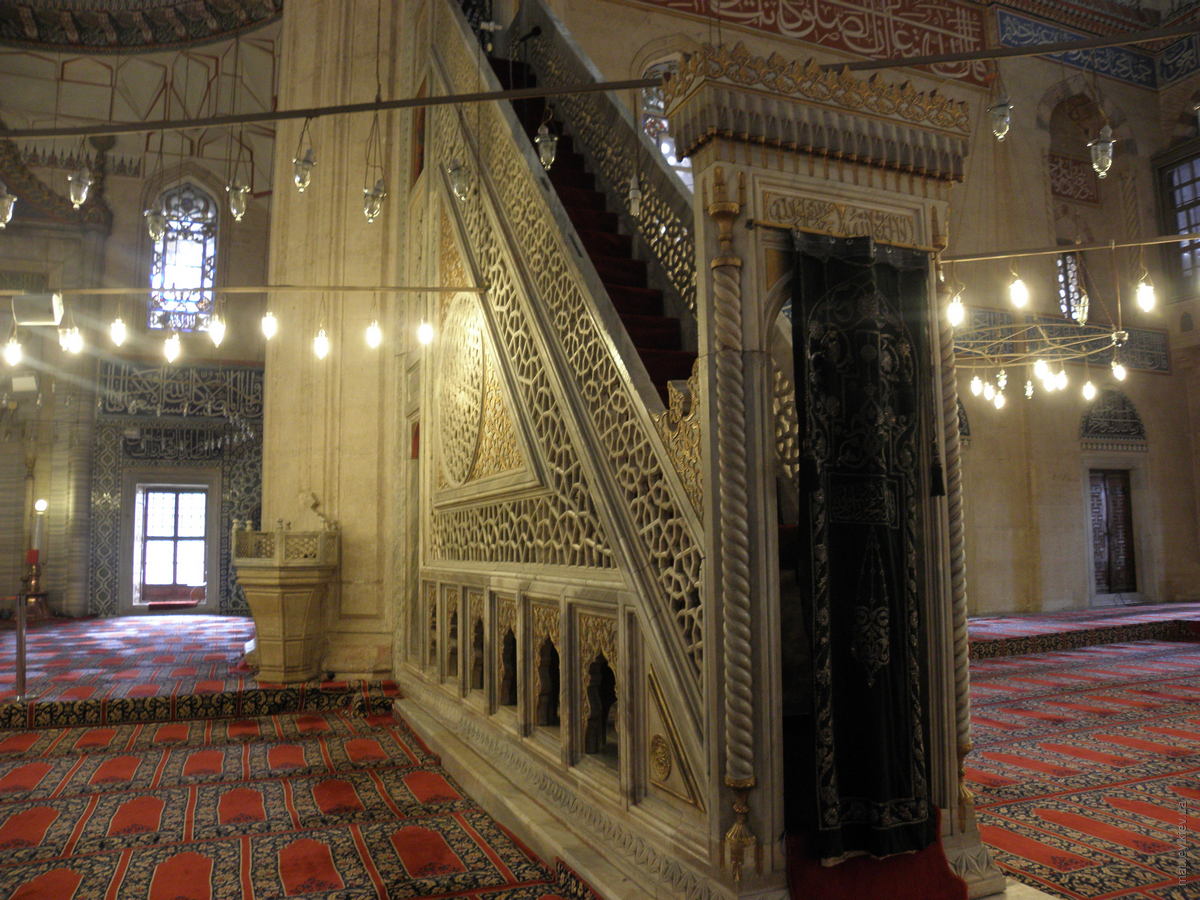
Several random photos of Selimiye mosque.
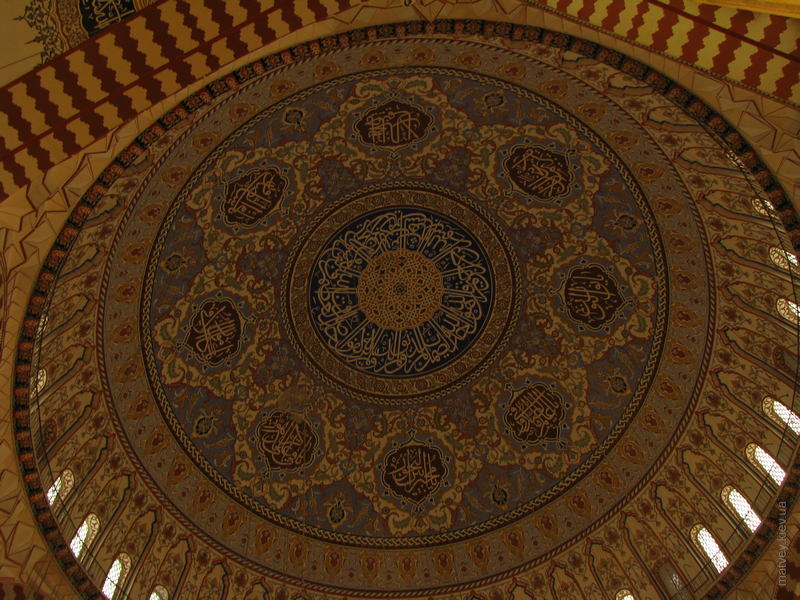
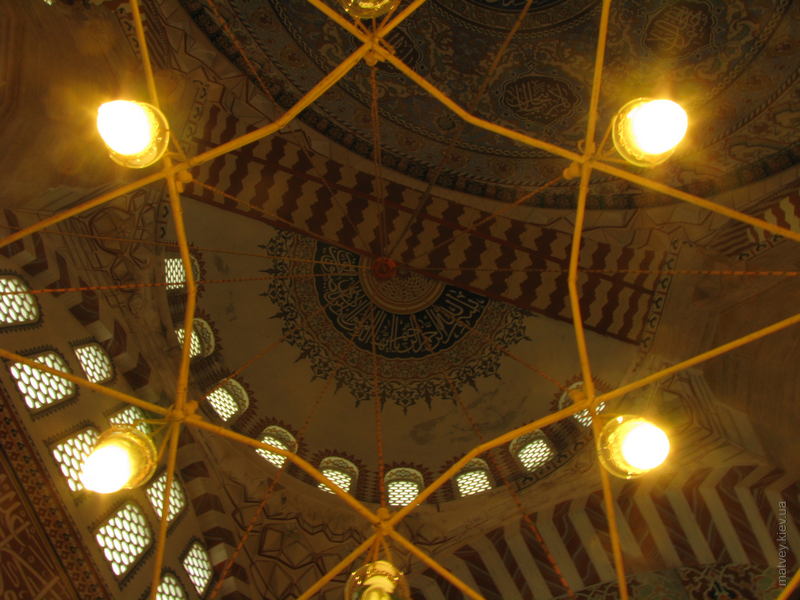
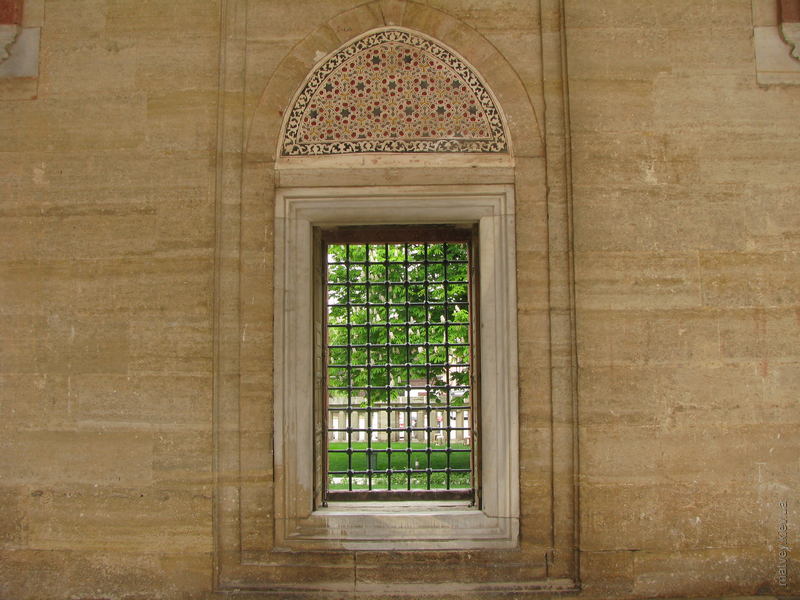
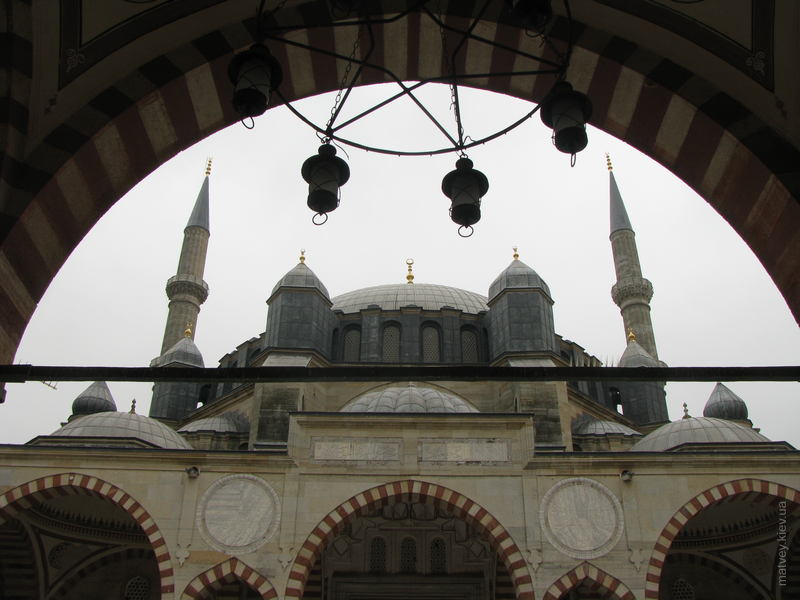
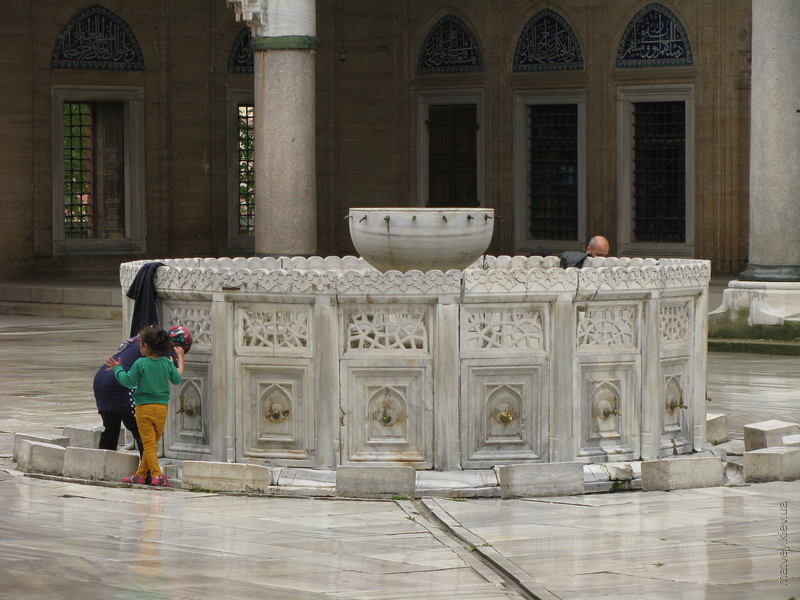
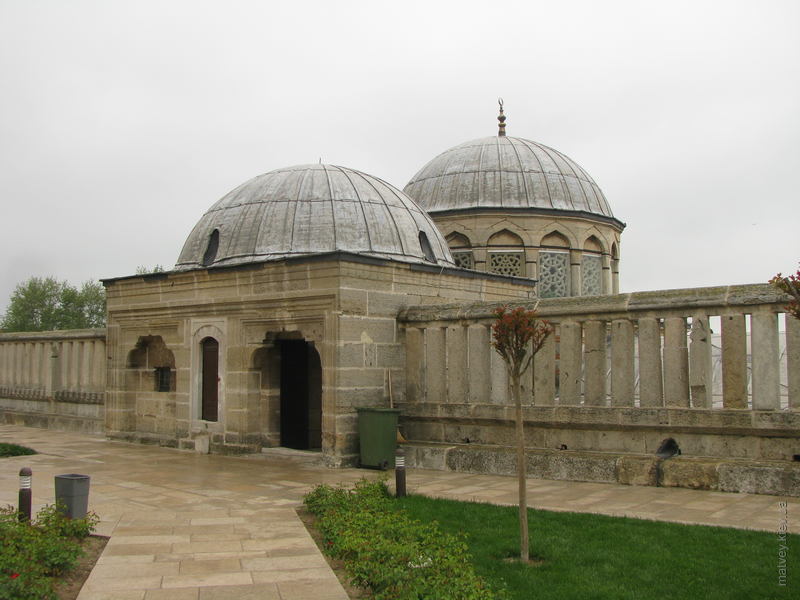
There are lots of other mosques to talk about. You see one through the windows of another.
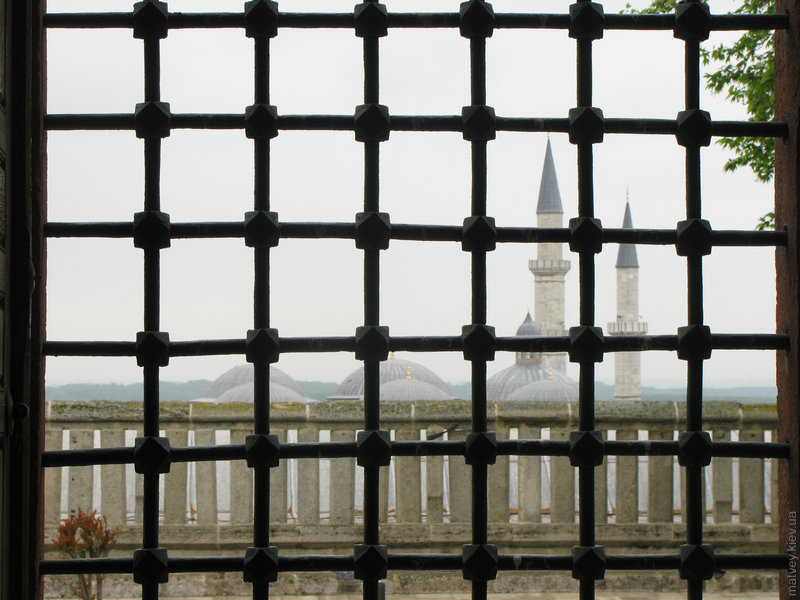
Kadırhane street.
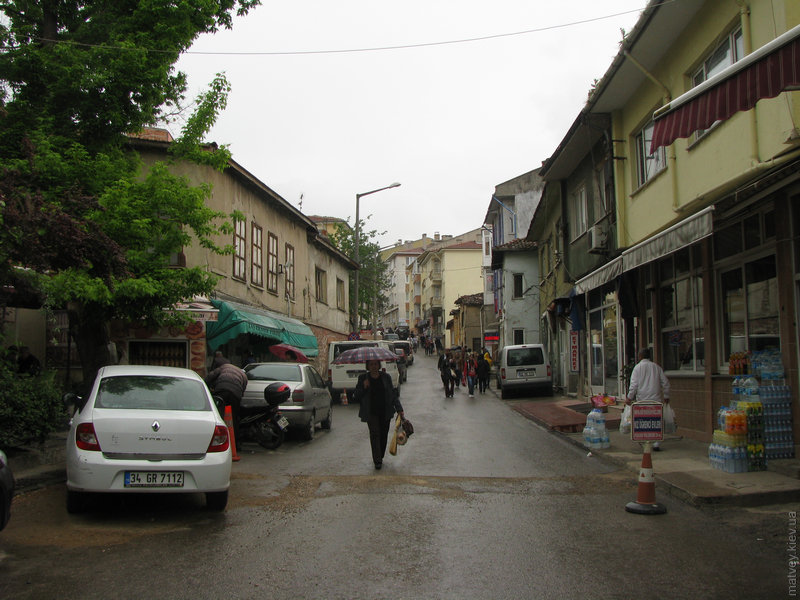
A word I heard before: Kervansaray. The one in Edirne hosted a hotel, and looked like new. It would have been nice to drink a tea or a coffee under this wall.
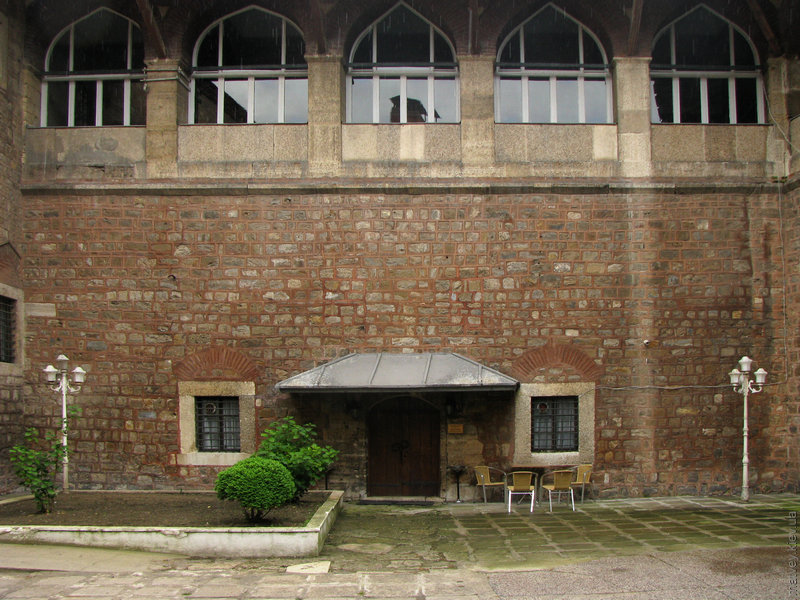
A small pedestrian area was there in the center. We ate some street food here.
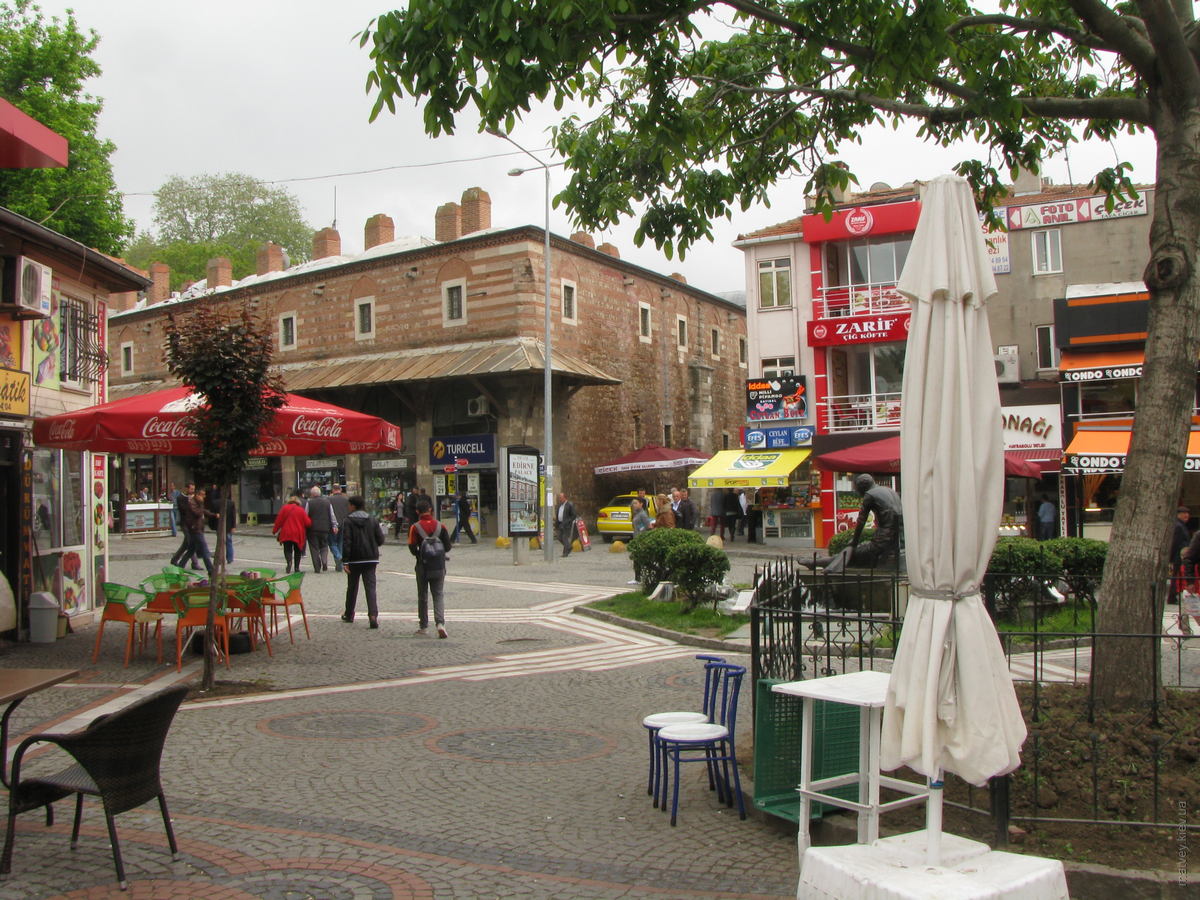
An old building with small offices of various businesses.
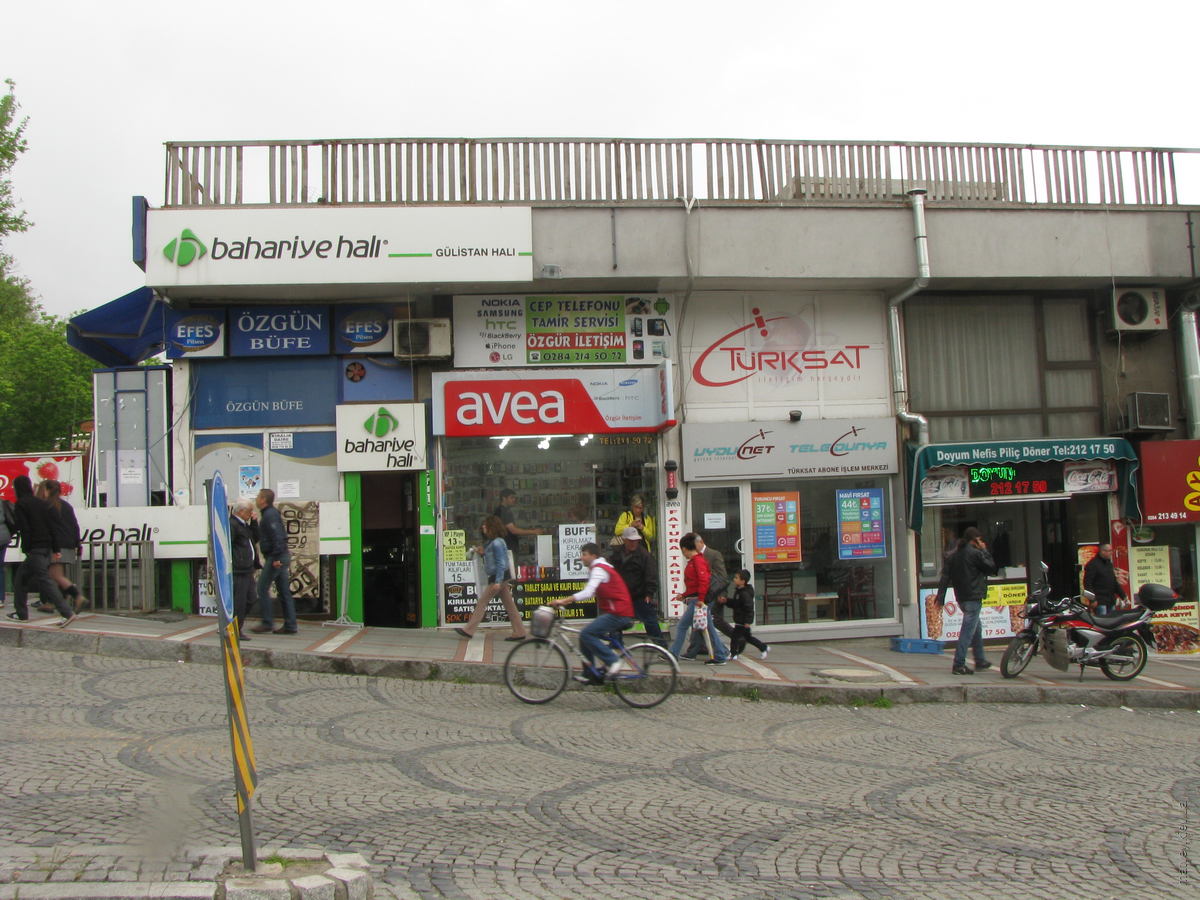
One of central streets.
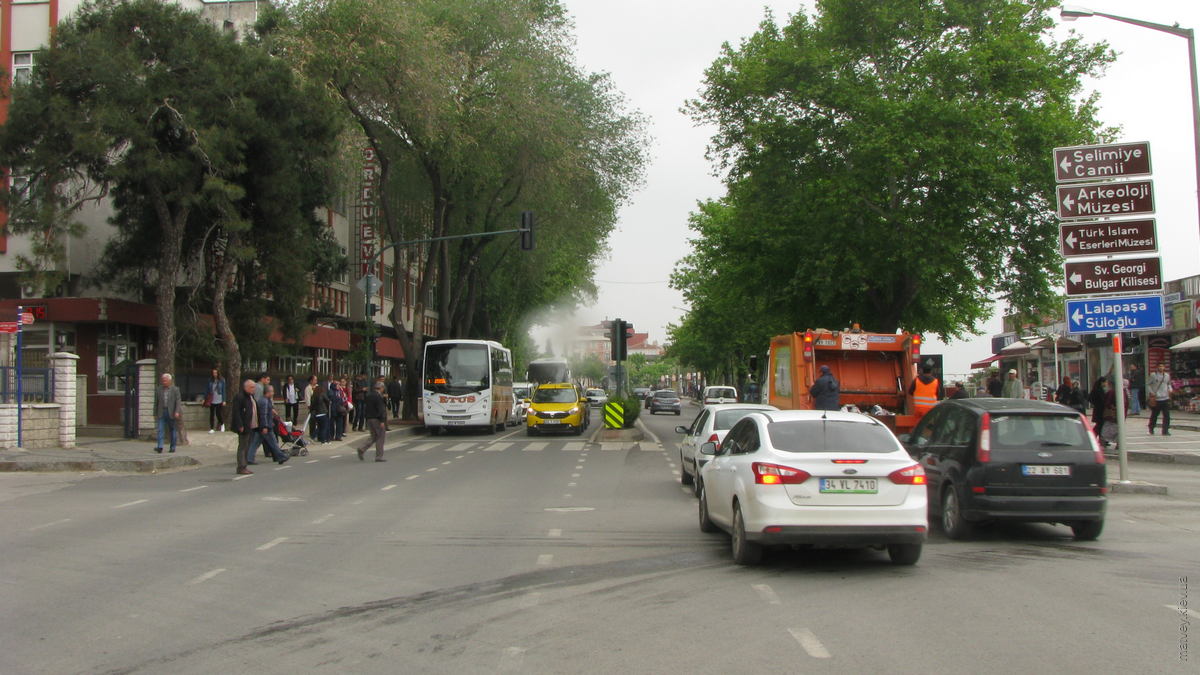
A bus.
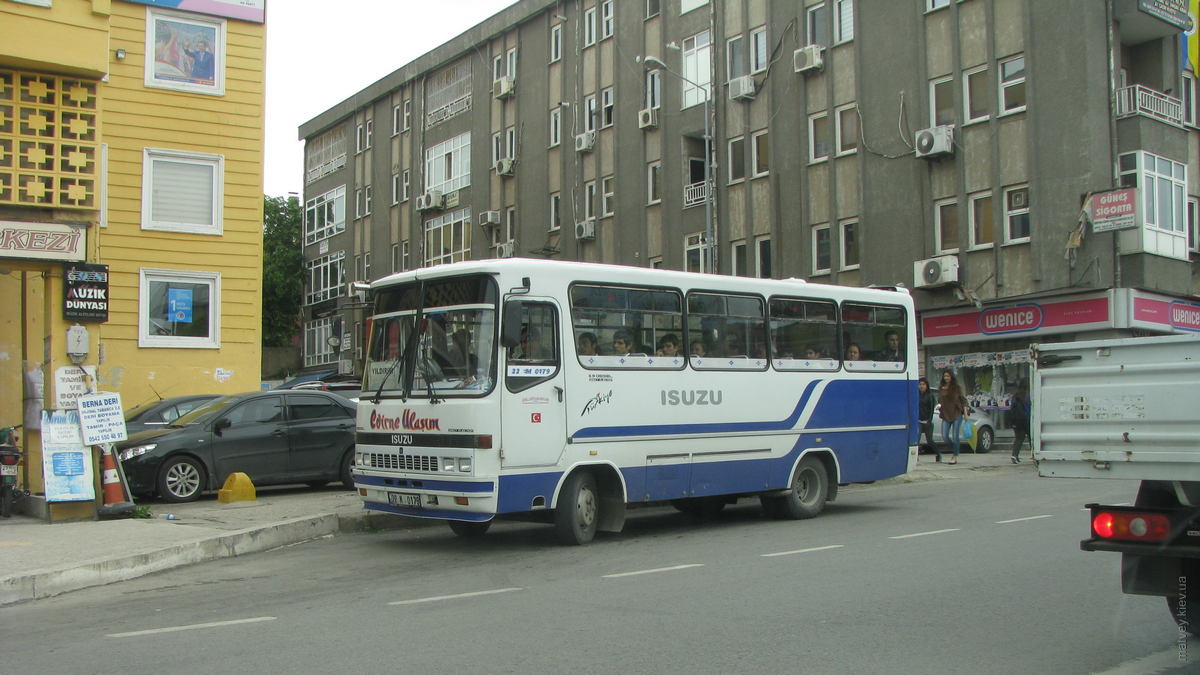
This is a külliye — a complex of buildings of various purposes, usually centered around a mosque. It is just outside the Edirne's city line.
We visited the hospital museum, which had many crazy drawings of episodes from the ancient medicine, and many realistic wax figures depicting it.
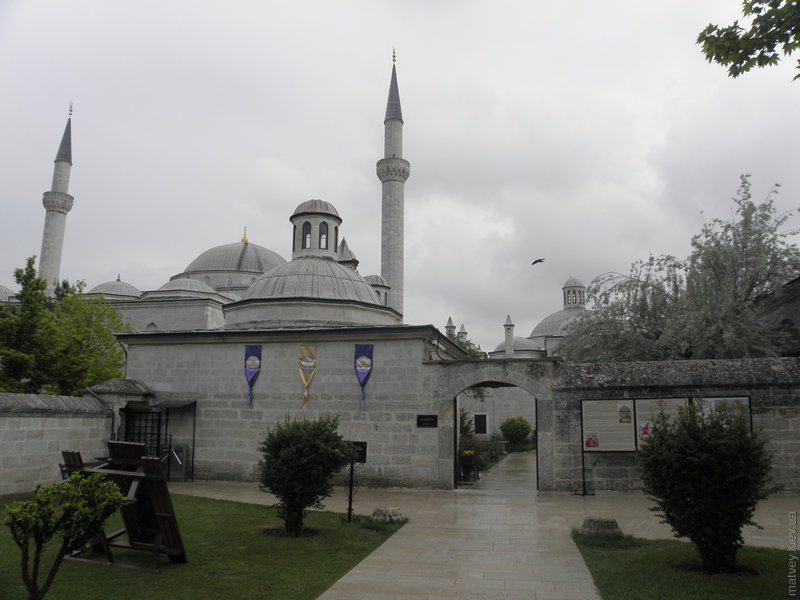
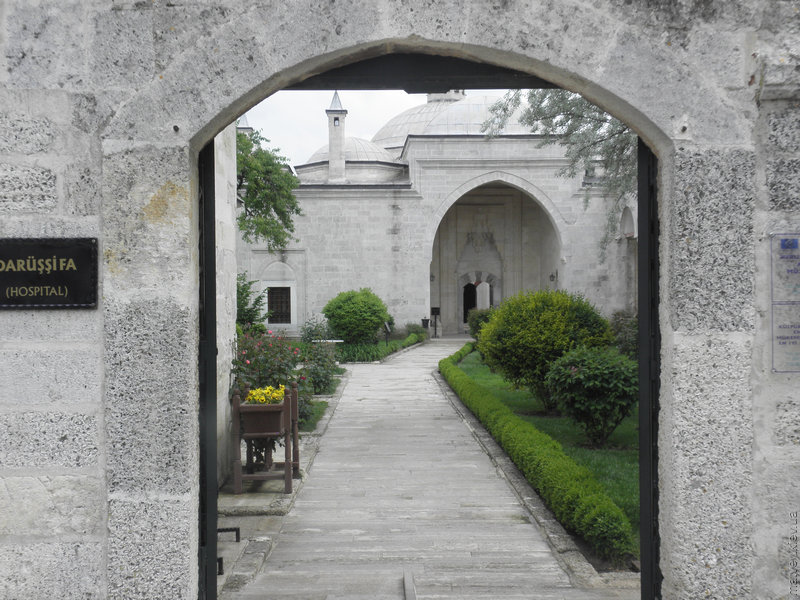
A room with a madman.
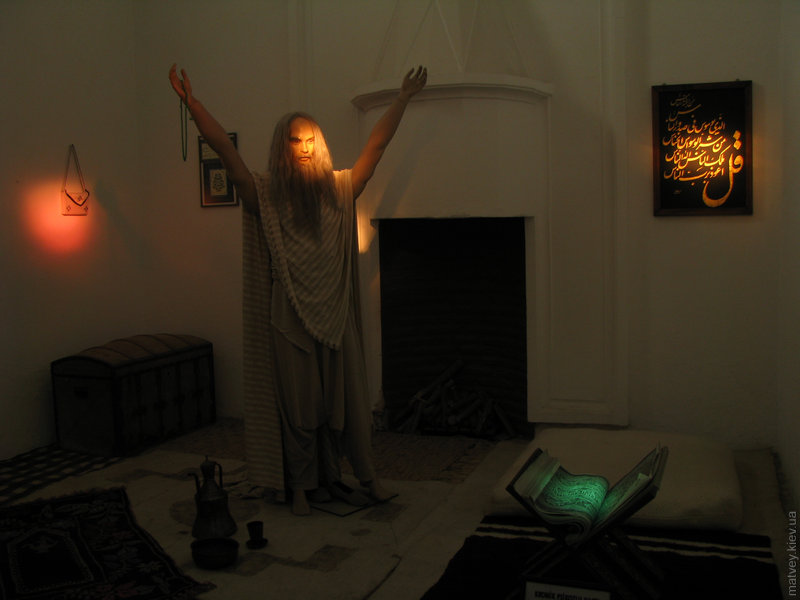
They were trying to heal stuff with music.
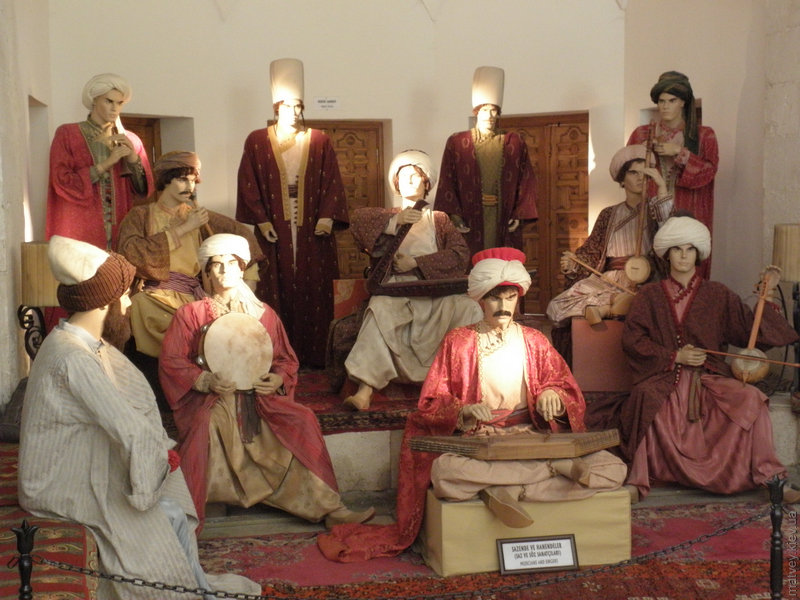
These highly realistic wax figures were depicting a scene of provoking a venomous snake's bite of a rooster, in order to make chicken soup using from the soon-to-be dead bird. In further order to heal someone from something with something resembling homeopathy but slightly crazier.
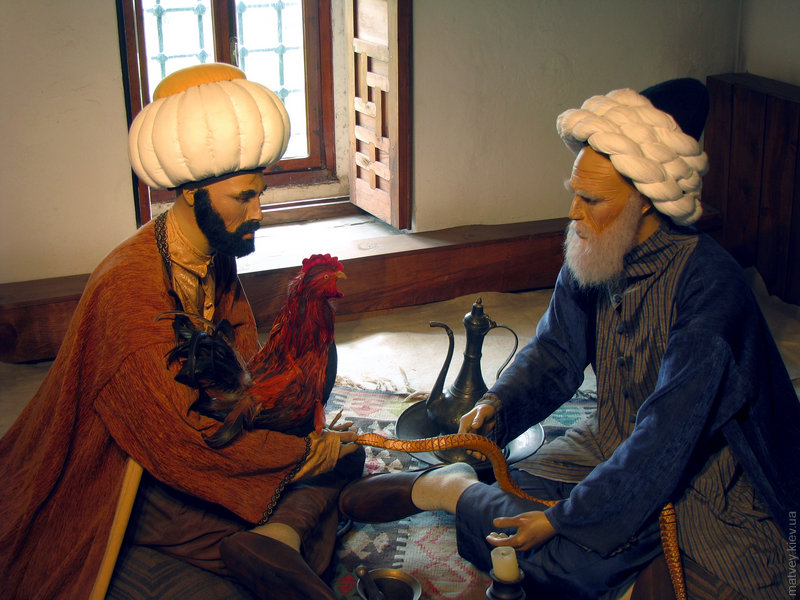
A drawing of a girl with chicken pox.
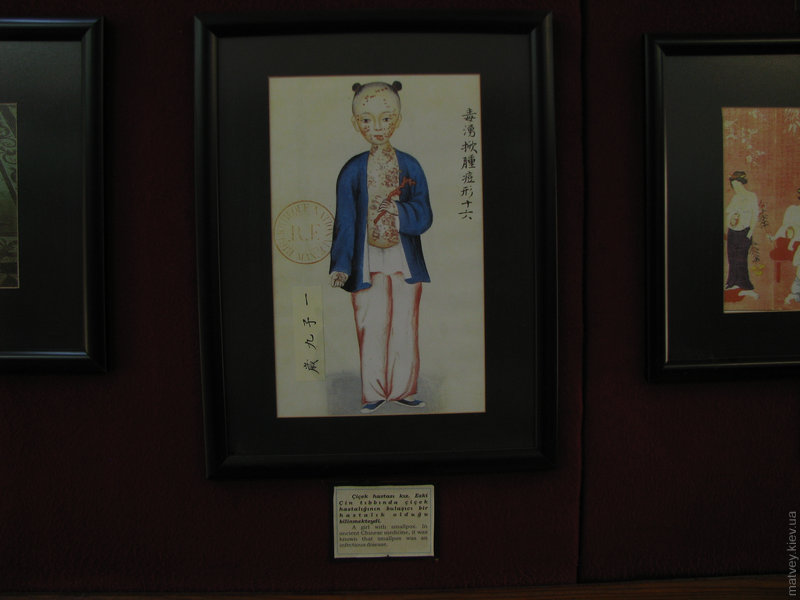
A doctor pushing death away from his patient. Charcoal on paper.
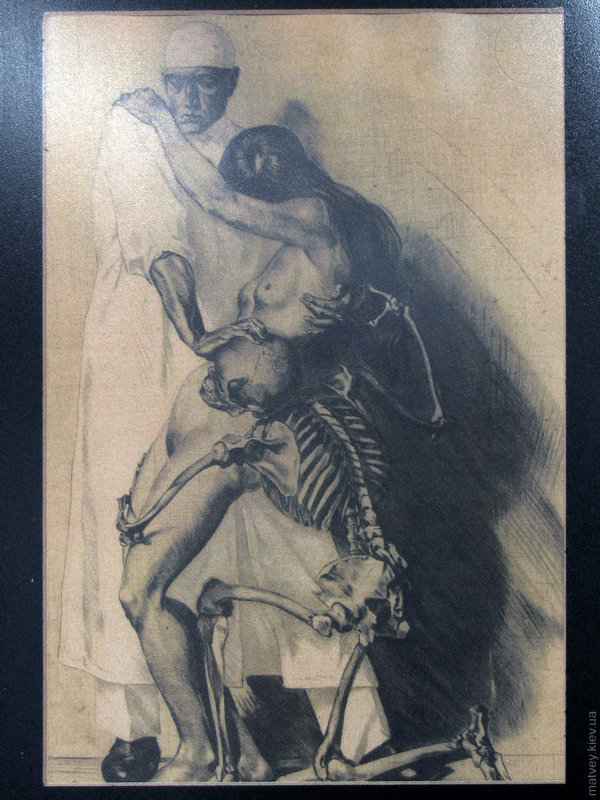
It was possible to stray behind the outer walls of the complex to see the Tunca river with an old bridge. What other name could the bridge have, if not «the bridge of Bayezid the 2nd»?.
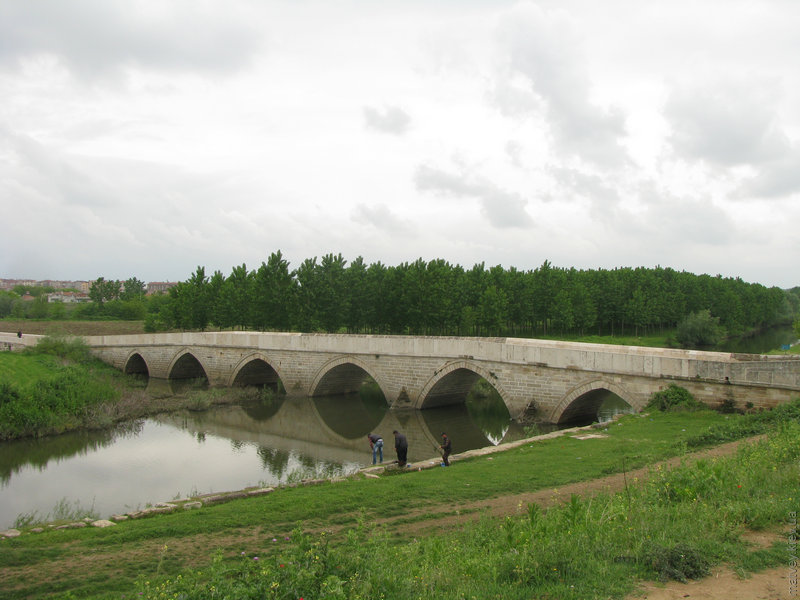
This place was not far from Tunca's mouth in river Mariç.
The whole complex was white and gray, not very pleasant for the eyes. Well, not including the place from the following picture. It would have been nice to drink some tea here, but no one was selling it, despite having tables and chairs put out near the pillars.
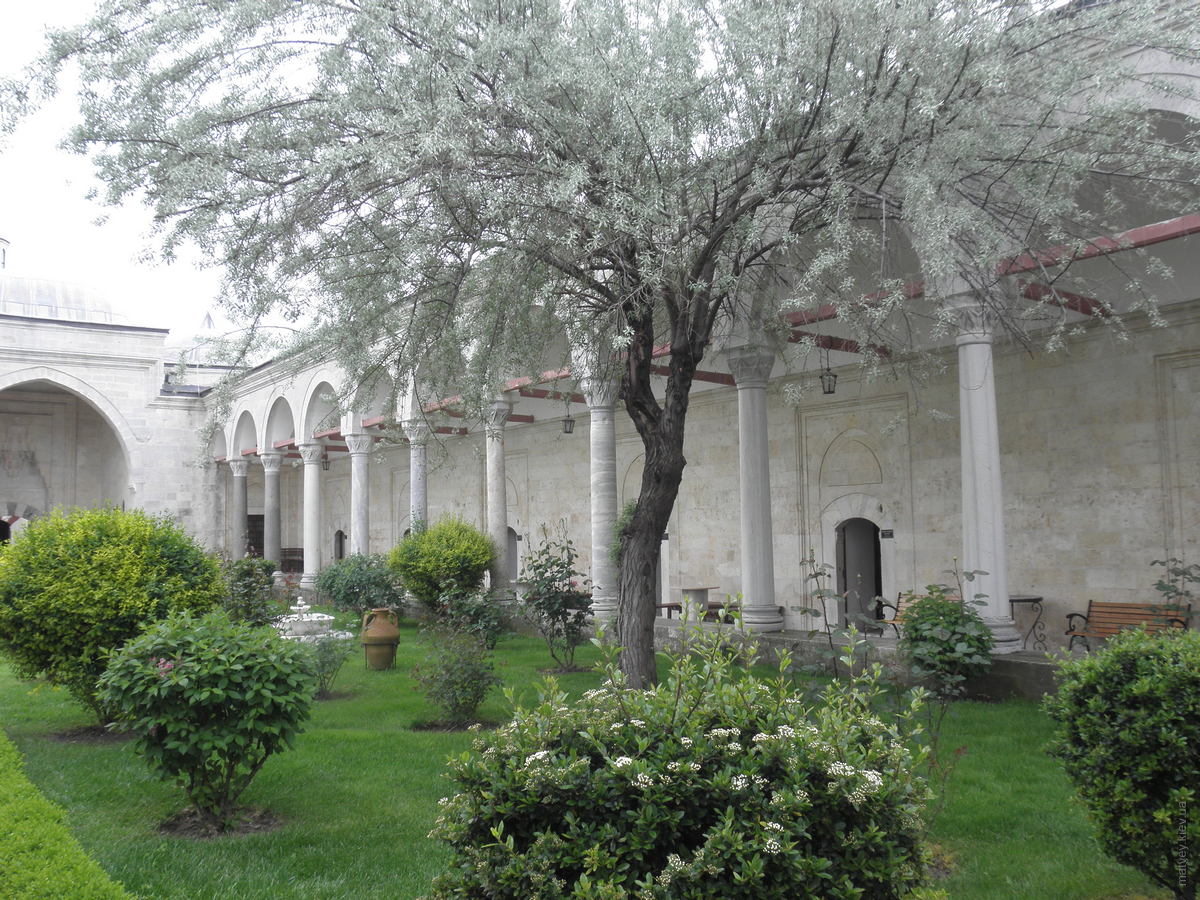
It was raining heavily while we were lazily staring at wax figures. I was grateful to these white and gray walls (and to roofs of the same color) for the shelter.
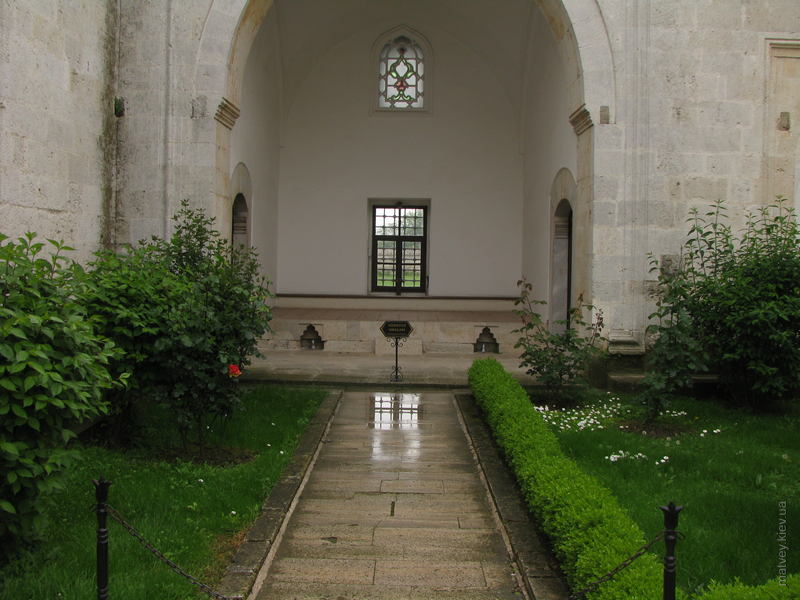
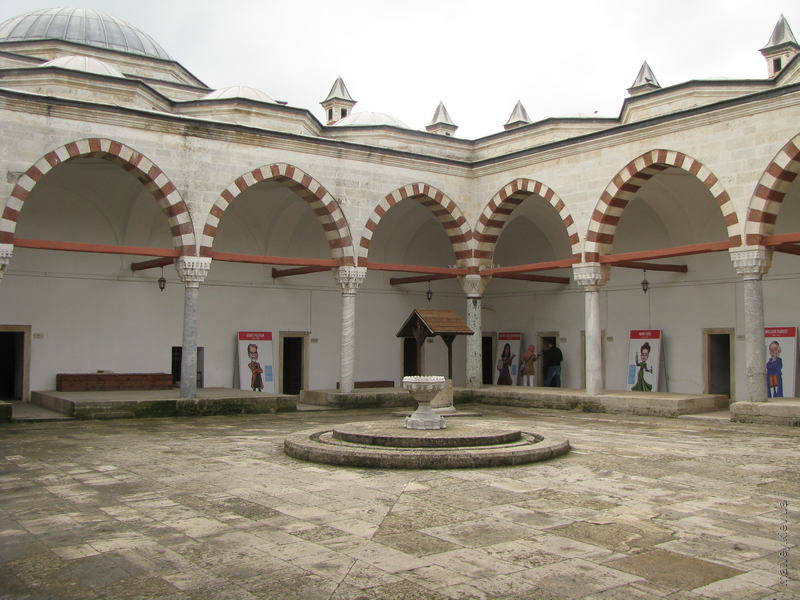
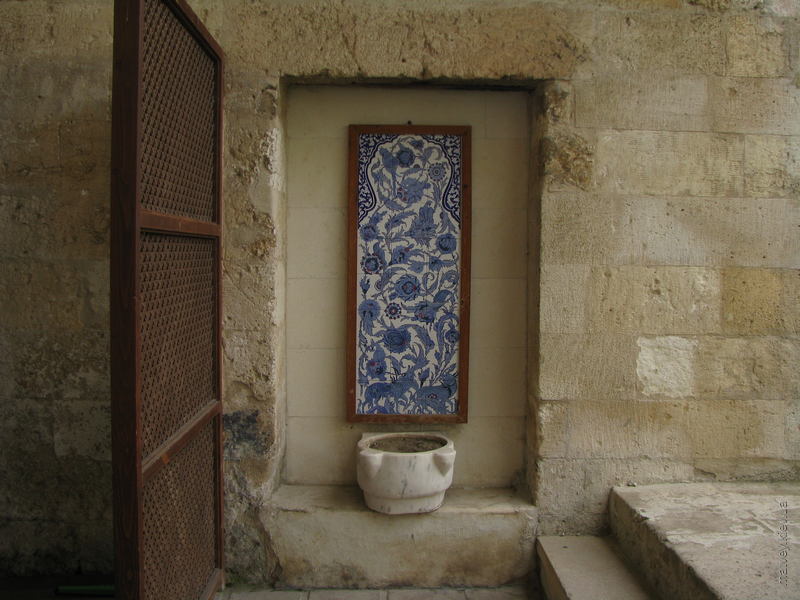
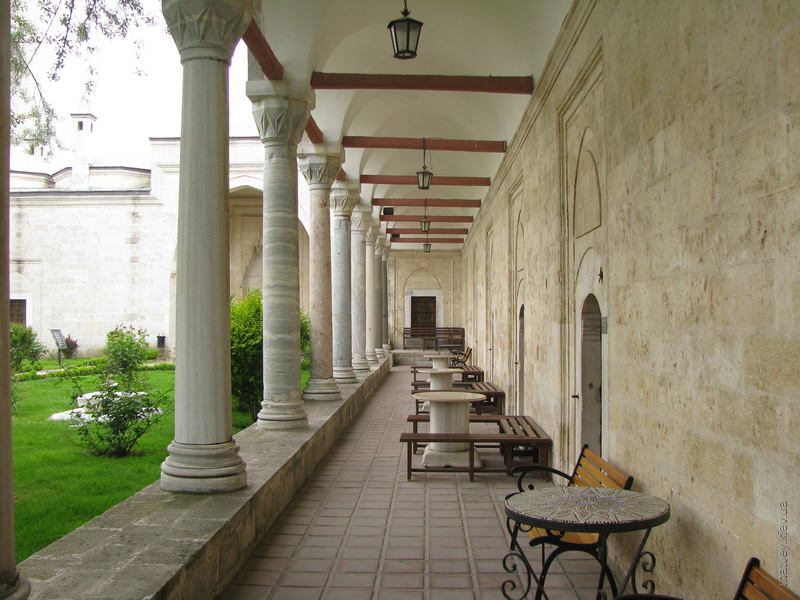
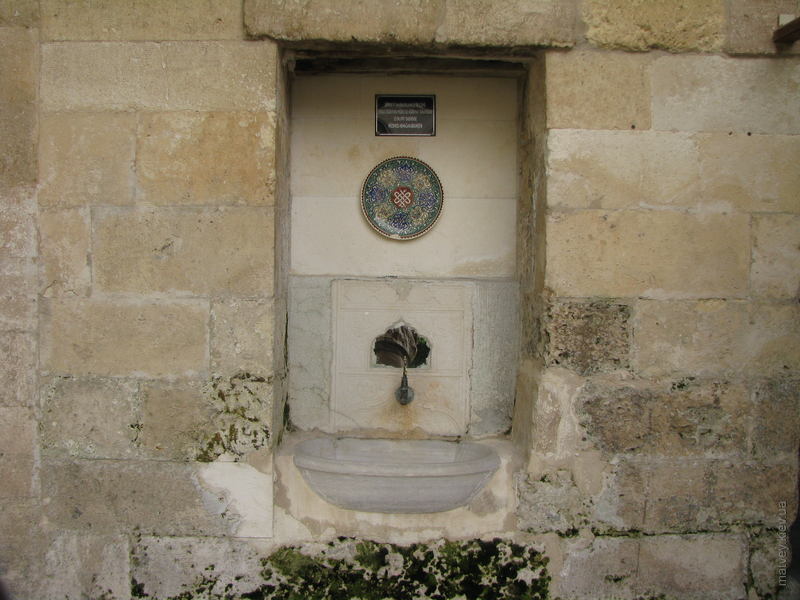
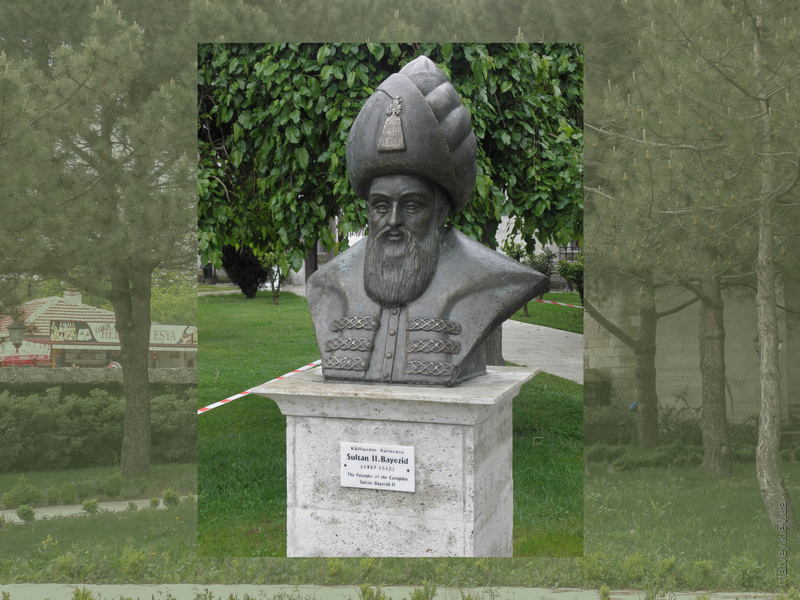
This literally means «factory site» and is an area with large garages and workshops, such as — but not limited to — car repairs. I've seen such areas in Lüleburgaz, Babaeski, Edirne and Kırklareli. This area in Edirne was a rectangular grid of wide service lanes and blocks of big boxes capable of accepting rather large vehicles.
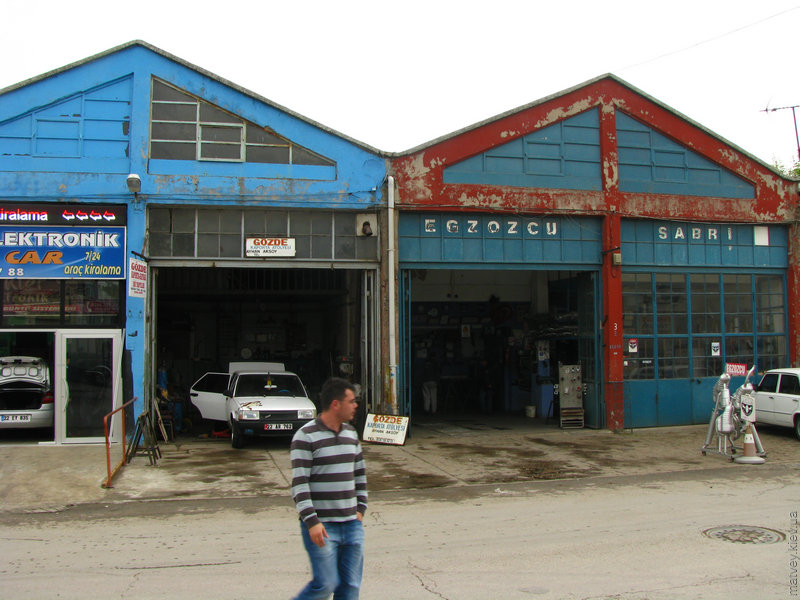
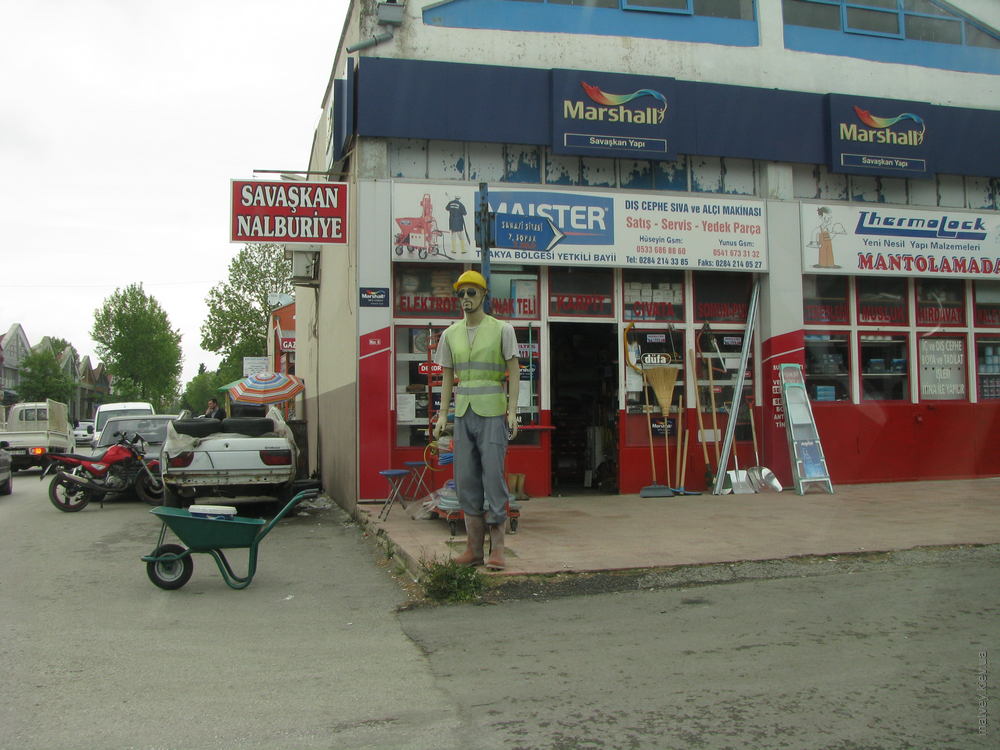
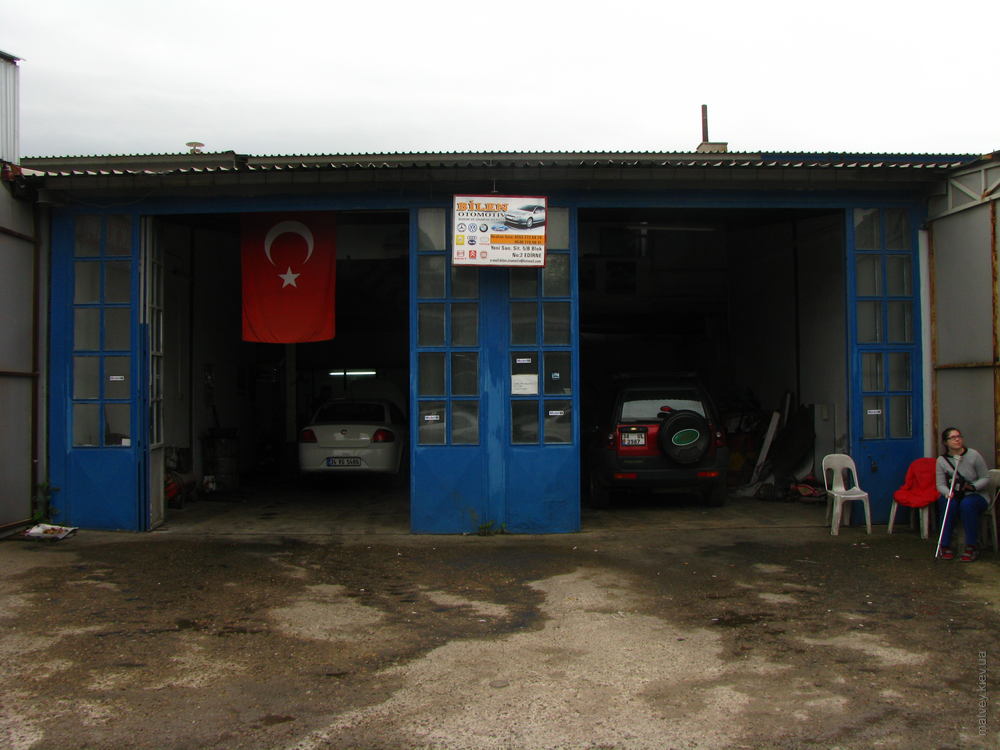
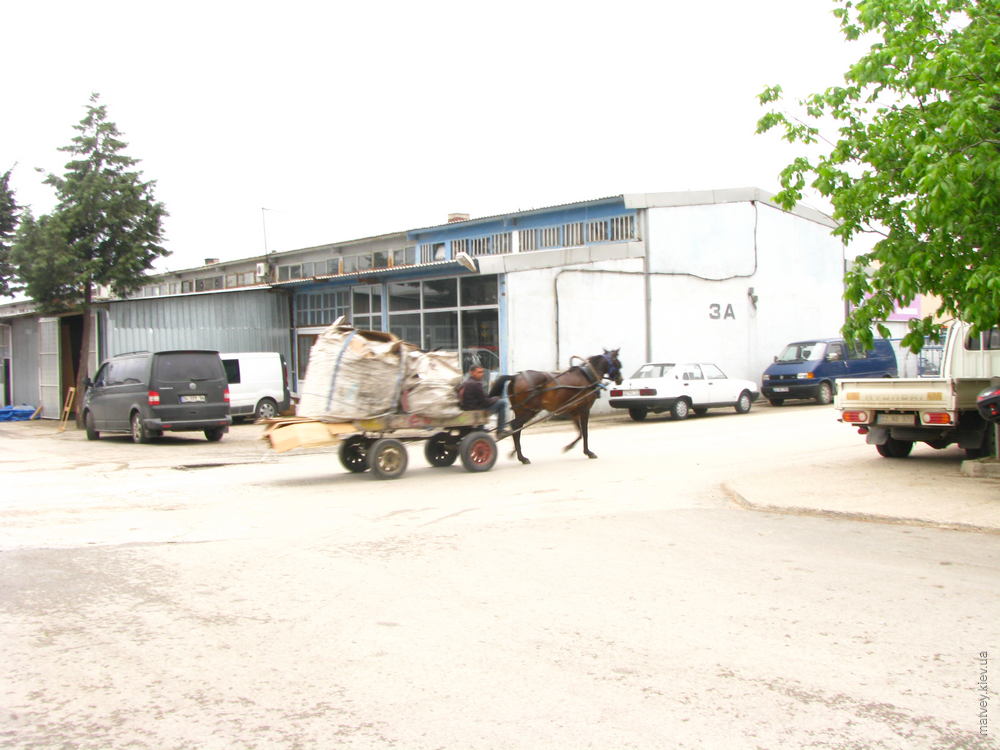
They even had at least one mosque inside this area of garages. Yet another difference from the garages of Ukraine.
A man on a prison's watchtower. I don't remember how exactly did we get near this place. Did we get lost?
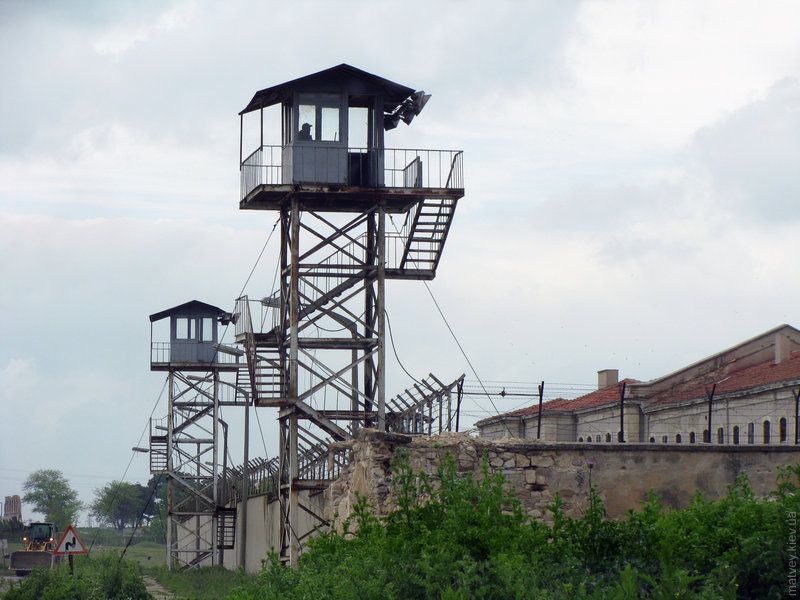
A (crappy) view of the city from a bridge under construction.
